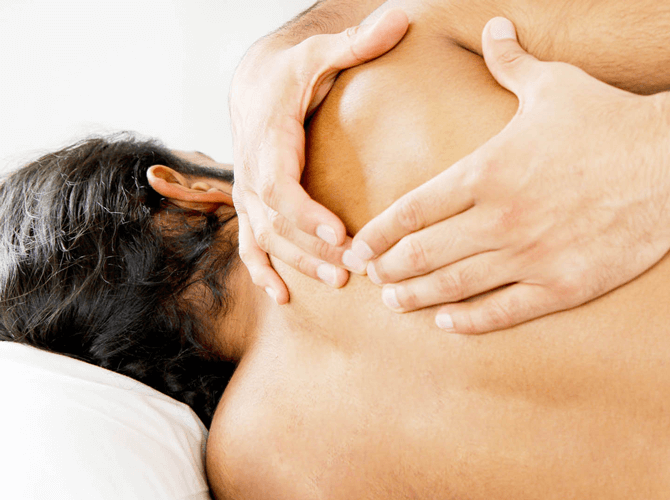Osteopathy

What is osteopathy?
Osteopathy is a system of diagnosis and treatment for a wide range of medical conditions. It works with the structure and function of the body, and is based on the principle that the well-being of an individual depends on the skeleton, muscles, ligaments and connective tissues functioning smoothly together.
To an osteopath, for your body to work well, its structure must also work well. So osteopaths work to restore your body to a state of balance, where possible without the use of drugs or surgery. Osteopaths use touch, physical manipulation, stretching and massage to increase the mobility of joints, to relieve muscle tension, to enhance the blood and nerve supply to tissues, and to help your body’s own healing mechanisms. They may also provide advice on posture and exercise to aid recovery, promote health and prevent symptoms recurring. Book Appointment
Regulation.
All osteopaths in the New Zealand MUST be registered with the Osteopathic Council of New Zealand, our state registering body. Osteopathic qualifications include DO which means Diploma in Osteopathy, B.Sc or B.Sc (Hons) which is the degree status. All osteopaths must undertake mandatory Continuing Professional Development (CPD) which means all osteopaths will remain trained up to the latest standard of clinical and practical competence. Osteopaths operate under the Health Practitioners Competence Assurance Act 2003 (HPCA Act). The Act was passed on 18 September 2003. Most of the provisions of the Act came into effect on 18 September 2004. The HPCA Act replaces the profession-specific legislation that was in force before this date.
What do osteopaths treat?
– Most suffer low back trouble. Most back pains result from mechanical disturbances of the spine – postural strains, joint derangements and spinal disc injuries. Osteopathy, with its comprehensive approach to health care,is a common treatment modailty for patients with low back pain.
– Many of our patients are women. Many women are working mothers and both aspects of their lives can give rise to problems, from headache relating to stiffness and tension in the neck (cervicogenic) to severe musculo-skeletal disorders. Pregnancy can put a strain on the low back and pregnant women often visit an osteopath.
– Many patients are losing fitness at this stage in middle age and are more prone to injury. Osteopaths consider all the factors, examining posture and the strength and flexibility of muscles, ligaments and tendons.
– Many are elderly. Painkillers are not the only solution for the aches and pains associated with ageing. For more permanent relief it is necessary to eliminate the underlying causes of pain and reducing stiffness in the less acute stages of arthritis.
– Many problems relate to work. Work, whether it be a computer terminal or in heavy industry, can give rise to disorders of the muscles, tendons and joints, particularly in the back, hands and arms. Remedial advice and preventative exercise are useful to prevent work related aches and strains.
 What are the origins of osteopathy?
What are the origins of osteopathy?
Andrew Taylor Still, born in 1828 in Virginia, USA, trained as a doctor, according to the system of medical education available at the time. As time went on he followed a different path from many of his peers, eschewing alcohol and the habit of contemporary physicians of administering crude drugs at their disposal in heroic quantities. This drove him to seek new methods of treating sickness. The outcome of his research was the application of physical treatment as a specialised form of treatment for which he coined the name ‘Osteopathy’.
In 1892 A T Still organised a school in Kirksville, Missouri, for the teaching of osteopathy. It was from these small beginnings that osteopathy was brought to the UK around the turn of the century. The first school of osteopathy in the UK was set in London in 1917 and over time other schools and colleges followed.
What to expect.
We want you to have the best possible experience at our clinic. Kay is trained to the highest international standard and maintains ongoing study and research. She is governed by the Osteopathic Council NZ, as well as the Health and Disability Commissioner.
This is what you should expect from us:
-
The right to be treated with respect.
-
The right to freedom from discrimination, coercion, harassment, and exploitation.
-
The right to dignity and independence.
-
The right to services of an appropriate standard.
-
The right to effective communication.
-
The right to be fully informed.
-
The right to make an informed choice and give informed consent.
-
The right to support.
-
Rights in respect of teaching or research.
-
The right to complain.
We love osteopathy and think you will too.
For more information please look at Health Navigator, the Ministry of Health, and the ACC.


